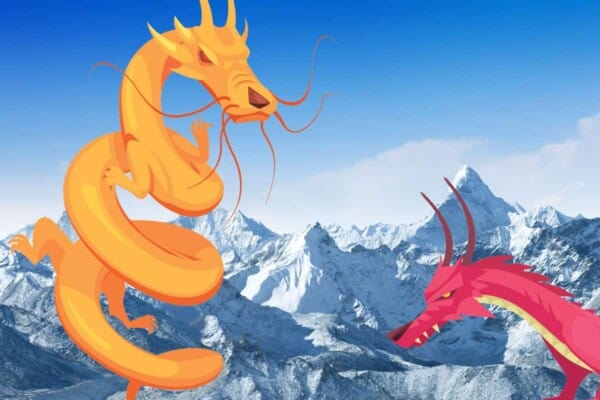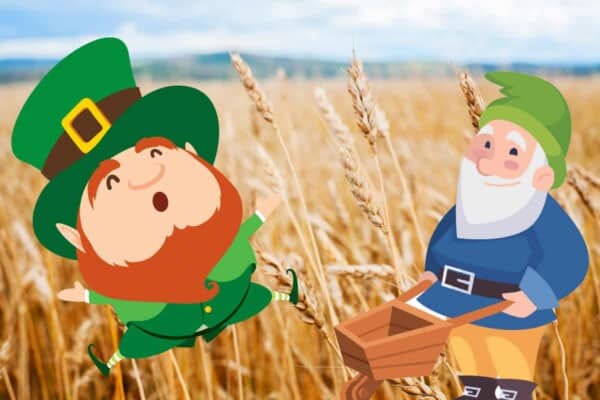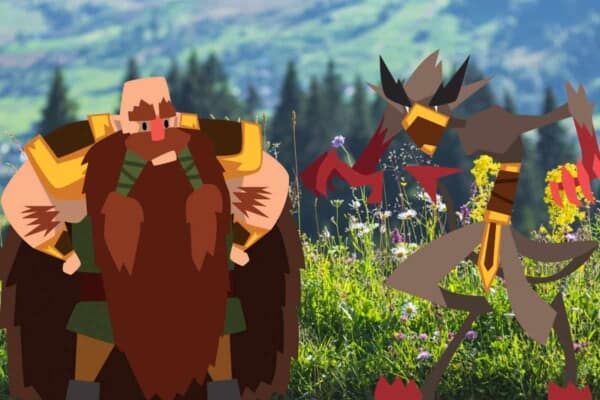Ogres and orcs are both fearsome fantastical creatures, and getting them confused is pretty simple. However, if you’ve never examined the history of these creatures previously, you may not know that they are actually rather different, though they do have some similarities.
Ogres are mythological creatures that date back to the 12th century. Orcs are fantasy creatures popularized by JRR Tolkien, though a few older sources use a similar word to “orc.” Both are man-eating creatures that are very ugly and aggressive and are stronger than humans.
In this article, I’ll look at the differences and similarities between the two creatures more in-depth and compare their origins, appearances, powers, and personalities.
Comparing Orcs and Ogres
As mentioned above, ogres and orcs are two different creatures. While they have their similarities, they also have their differences.
Here’s a table that will give you a quick comparison between orcs and ogres. I’ll go more into each aspect later in the article.
| Ogre | Orc | |
| Origin | Earliest use of the word “ogre” is in a 12th-century poem. The idea of ogres is thought to come from the Biblical giant Og, the Greek river god Oigaros, or the Etruscan underworld god Orcus (who ate human flesh). | The words “orc” and “orcneas” are mentioned in a 10th-century manuscript and in the epic poem Beowulf. However, orcs were popularized by their inclusion in JRR Tolkien’s fantasy works (primarily The Lord of the Rings). |
| Appearance | Ugly, very tall (much taller than humans), skin that is an unusual color, head that is very large compared to their body | Ugly, dirty, similar in size and shape to humans, and bow-legged. They are also fanged, and have long arms |
| Powers | Extremely strong – much stronger than humans | Very strong – however, not as strong as ogres because of the size difference |
| Personalities | Brutish, aggressive, and have a huge appetite, especially for humans | Aggressive, warlike, evil. Consume all types of meat, including human flesh. May be cannibalistic. They also avoid sunlight. |
Origin
Ogres are first mentioned in a Perceval, li contes del grail, a 12th-century poem by Chrétien de Troyes, which includes the line “qui jadis fu la terre as ogres,” which translates to “which was formerly land of ogres.”
They were made popular in later folklore and fiction, including Puss in Boots and Sleeping Beauty. These creatures are thought to be derived from, varyingly:
- The Etruscan god of the underworld, Orcus, who also ate human flesh
- Og, the last of the giants in the Bible
- The Greek river god Oiagros
Orcs are similarly mentioned in early literature, including in the 10th-century manuscript Cleopatra Glossaries and in the epic poem Beowulf. These creatures were varyingly thought to be:
- Another term for goblins
- Descended from the Etruscan god Orcus
- Evil spirits
- Walking corpses
A monster known as Orcus is featured in Edmund Spencer’s epic poem The Faerie Queene.
However, orcs only became popular following their inclusion in Tolkien’s literary works. It was Tolkien who created the image of the orc that people can recognize today.
In Tolkien’s works, orcs are either bred as evil creatures or are elves that were tortured and turned evil. In The Lord of the Rings, the character Saruman uses orcs to create a larger and stronger creature, the Uruk-Hai. Tolkien’s orcs can interbreed with humans, and half-orcs are mentioned.
Appearance
Both orcs and ogres are described as being exceedingly ugly. However, that’s where the similarity ends.
- Ogres are significantly taller than humans and are very stout. They have heads disproportionate in size to the rest of their bodies and skin that is an unusual color (often green or blue). They have a lot of hair, which makes them look animalistic.
- Orcs are similar in size to humans. They have fangs, long arms, and bowed legs and are usually very dirty. Uruk Hai are much taller than regular orcs.
Powers
The powers of orcs and ogres lie mainly in their incredible strength.
Both creatures are much stronger than humans. This makes orcs the ideal army for Sauron and other dark lords in Tolkien’s writings.
Similarly, ogres are also much stronger than humans. However, due to their size, they also overpower orcs. Humans who defeat ogres often do so by trickery, not strength, while orcs can be defeated by humans in battle.
In some stories, ogres are magical shapeshifters. However, in most tales, ogres – like orcs – do not possess any magical abilities of their own.
Personalities
Both orcs and ogres are aggressive and malicious. Additionally, they both eat human flesh – ogres particularly like to eat children, and they would destroy whole villages when they were hungry. Orcs eat meat of all kinds, including animal meat, human flesh, and even other Orcs, which means they engage in cannibalism.
However, that’s where similarities end. Ogres often live in castles and can communicate with humans. While they are strong, they are also lazy and try to trick people into things they could also physically force them to do. They are often rich, whether through stolen gold or their own hoard.
Orcs, however, are extremely warlike. They avoid sunlight, though Uruk Hai can travel during the day. They are used as armies for dark lords because of this warlike nature, and though they can work with other orcs, they often descend into in-fighting.
Final Thoughts
Ogres and orcs are aggressive, malicious creatures that often serve as villains in fantasy stories and mythology. While they have their similarities, they also have significant differences and are clearly two different beings.













